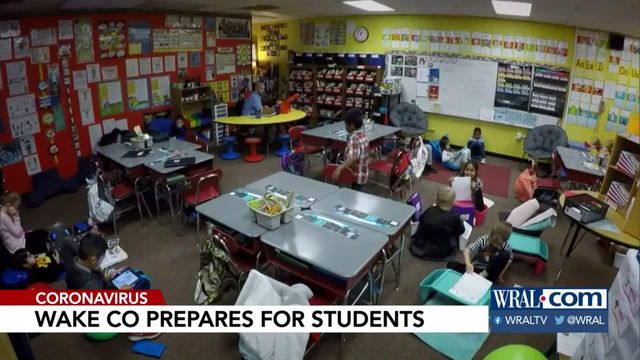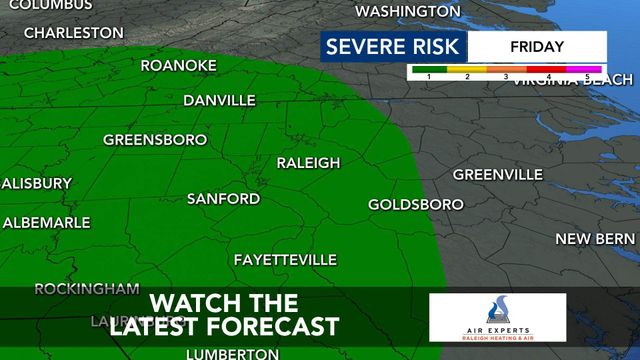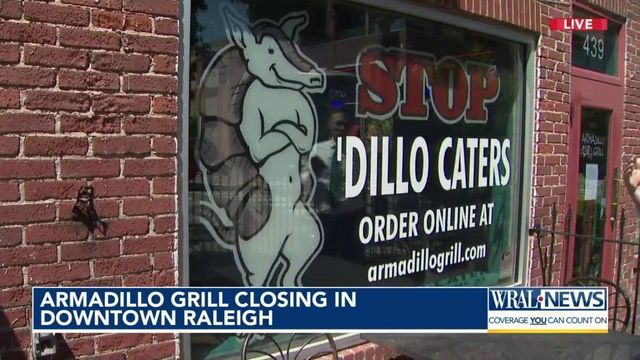Wake leaders: If schools reopen, expect only 16-18 students per classroom
Wake County Public Schools officials gathered on Tuesday afternoon to discuss strategies for reopening schools safely--including adding more classrooms and teachers to promote social distancing, potentially offering remote education options and programs to help students who have fallen behind due to COVID-19.
There were three big takeaways from the meeting:
- Options for remote learning
- Strategies for promoting safe social distancing in schools
- A Summer Jump Start Program
Remote learning
School officials said it’s very possible parents can expect online learning to be an option for 2020-21 if they want it.
School Board Member Jim Martin made it clear that he wants the board to be thoughtful about the virtual aspect of this plan to ensure it doesn’t just involve a screen.
"I really am concerned at how these things come together," Martin said. "I hope we don’t create something that is going to be the next North Carolina Virtual Public Schools. We need real schools and real instruction."
Another official argued remote learning could literally save the lives of families, students or staff with compromised immune systems, who are vulnerable to COVID-19.
If Wake Schools allowed remote options, they considered modeling themselves after other NC school systems. They also discussed keeping the application for online classes open through the first two weeks of school, so students could choose to shift into this option without leaving the school’s system.
Some officials suggested that, given how overcrowded schools already are, offering an online option could help provide space for social distancing.
The board voted 'yes' or 'no' as a consensus--not an official vote to offer online classes, but an endorsement to move forward with exploring remote options.
When asked for endorsement, everyone said ‘Yes’ to the idea of offering some form of remote learning.
Dr. Lloyd Gardner, Chief of Staff and Strategic Planning, said, “We are very excited about this possibility and believe [online learning] will be part of our overall plan.”
With unanimous endorsement for moving forward, they said they plan to add even more structure around the idea of remote options in the coming days.
Social distancing at school
If schools reopen, the average classroom will allow 16 to 18 students per class, with students seated every other desk to allow space between them, officials said. Staff recommended 50 square feet per student to allow them six feet of social distance space.
A big question is how schools will find room for all the extra classrooms needed to accommodate these smaller class sizes. Officials suggested using the media center, gym or cafeteria to provide extra classroom space.
However, with extra classrooms comes the need for more teachers. Officials estimate they could need an extra 27 classrooms--meaning they'll need 27 teachers to help cover the new rooms.
Officials said it's possible schools will utilize Teacher's Aides or AG teachers to assist with coverage.
School officials still have questions about how to ensure safe social distancing and cleanliness in restrooms--as well as how to get younger students to follow social distancing and hand washing guidelines.
Summer reading and math supplemental learning
Officials introduced a Summer Jump Start Program to help students catch up who fell behind due to remote learning.
Students who were considered 'not on track' after switching to remote learning during the pandemic would be eligible to take part in a program for supplemental literacy or math support.
WCPSS got an allotment of nearly $6 million, and at least 50% of it must be spent summer reading interventions for students grades 2 and 3 who have been negatively impacted by remote learning.
An additional 25% can be spent for continued supplemental literacy support during the 2020-21 school year--as long as it takes place outside of scheduled instructional time.
The rest of the allotment will be used for students who were grades Kindergarten, 1st and 4th grade.
They planned for an estimated 6,400 elementary students to receive extra remote instruction, preparing them for the 2020-2021 school year.
The state has asked all school districts to develop various reopening plans based on different scenarios. Gov. Roy Cooper has said he will decide by July 1 what the baseline would be for reopening.











